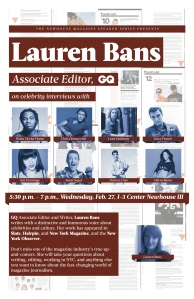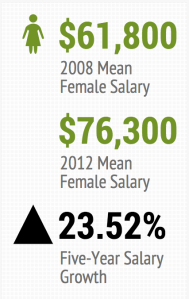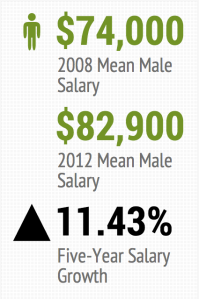I was an avid Twitter-er (shameless plug: FOLLOW ME! @meganpaolone) throughout undergrad, mainly documenting my daily escapades through photos and complaining about how much homework I had, but I didn’t really understand the true value of the platform until coming to Newhouse. Since then I’ve cultivated a very selective “following” list, made up mostly of journalists and writers, a lot of them women.
To earn a spot on my following list, there’s generally just a few qualities that I look for: 1) While my own tweets aren’t generally snarky, I do enjoy some sass. Think Gawker/Jezebel. Snark isn’t everything, but it certainly is one of the first things to hook me. 2) I’m also the type of person that gets 90 percent of her news via Twitter links, so I appreciate engaging, informative tweets. Quotes are OK, but copying headlines verbatim generally earns you an “unfollow.” 3) Finally, I appreciate (and really respect) those tweeters who have managed to strike an acceptable balance between useful and personal. Photos of your cat/kids every once in a while: OK. Daily updates of your brunch progress/foursquare check-ins: Unfollow.
The seven ladies (yes, seven — I like to be different) I’ve listed below, I think, have excelled in combining most of these qualities in their everyday tweeting:
- Susan Orlean
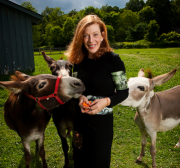
I really just want Susan Orlean to be my best friend. She’s an author, a staff writer at The New Yorker and a contributing writer to a slew of other big-name mags, but most of all she’s hilarious. I started following her because of her commentary on writing/editing, but her feed has turned out to be a trove of treasures. Also, her Twitter avatar is a photo of her with donkeys. Adorable.A few things to never ask unless you’re sure: “When’s the baby due?” “Did your book get published yet?” “Is that your grandchild?”
— Susan Orlean (@susanorlean) February 22, 2013
- Liz Heron

Liz Heron is the director of social media and engagement at the Wall Street Journal, and her tweets are jam-packed with useful information. Usually it’s a lot of data, surveys and stats about journalism and social media, but she also tweets about current events.52% of @wsj readers say they’re on LinkedIn every day. 9% say they never use it. on.wsj.com/XLmxNx
— Liz Heron (@lheron) March 1, 2013
- Lisa Williams

Lisa Williams is a fellow at the MIT Media Lab and just won the Knight News Challenge for data visualization. She runs a website for journalists who want to learn how to code and program called Life and Code, and the majority of her tweets are about journalists becoming fluent in Web languages/data viz and how it can help their story telling.Life and Code, my learn-to-program for journalists Tumblr, snuck by 800 followers while I wasn’t looking.bit.ly/iu1Hbq
— Lisa Williams (@lisawilliams) February 26, 2013
- Clara Jeffery

I started following Clara Jefferey (co-editor at Mother Jones Magazine) after my obsession with MoJo started early last year, and her tweets have only gotten better. She tweets a lot of what’s coming out of MoJo’s website and blogs, but she also tweets intelligently about a wide variety of topics: movies, politics, environmental issues, etc. She pulls out the occasional funny tweet, and she’s a Mom with a capital “M” and proud of it. Bonus: she retweets often and hilariously.LET THEM EAT GIFT BAGS #oscars
— Clara Jeffery (@ClaraJeffery) February 25, 2013
- Lauren Bans

I’ve blogged about her before, but Lauren Bans, writer and associate editor at GQ, is a hysterical Twitter personality even if you’re not into journalism. When she spoke at Newhouse, she talked about her highly curated Twitter account (she deletes tweets if they don’t get immediate feedback), and how she gets antsy if she hasn’t tweeted in more than three hours.Whenever I feel like my ego needs to be checked I remind myself that I once sincerely loved and used an Anne Geddes mouse pad.
— Lauren Bans (@LaurenBans) February 27, 2013
- Dana Stevens
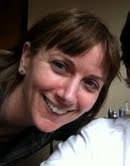
OK, I will admit that Dana Stevens is mainly on this list because I love reading her reviews on Slate (she’s their movie critic), but she also posts a lot of reviews/movie-related tweets on her Twitter account. Yes, a LOT of her feed is @-replies, but she’s usually engaging followers in a conversation about movies. When she does actually tweet though, it’s worth the wait.The fashionable disregard for end punctuation may be the thing that drives me off Twitter for good. Most overused stylistic affectation ever
— Dana Stevens (@thehighsign) February 14, 2013
- Margaret Sullivan

Margaret Sullivan is a must-follow simply because she’s the public editor at the New York Times. Her account is a great window into the innerworkings of the Times newsroom, and her blogs are thoughtful and insightful.What Front-Page Choices Say About The Times’s Priorities nyti.ms/12Nzm0z #nytimes #journalism
— Margaret Sullivan (@Sulliview) February 20, 2013
